As I mentioned some time ago, the gaming portion of my brain has really been gravitating towards super-heroes lately. Perhaps it's a juvenile male power-fantasy about never getting pneumonia or throwing out my back. Whatever the cause, I've really been fired up about the spandex-crowd, which is thematically about as different from Under the Dying Sun as something can be. But that's mental balance. Or something.
The first rpg I ever played was D&D, specifically the Holmes edition of 1978. Sometime thereafter, my group advanced to Advanced. So, depending upon whether you count AD&D as a separate game, either the second or third rpg I ever played was Villains & Vigilantes.
 Until my friend Patrick held up that box with the Jeff Dee cover, I had literally never considered the possibility of a super-hero rpg. But looking at that, I wanted to play (I was particularly curious about that Hornet-Man; was he the Hero or the Villain?). I have fond memories of V&V, but I never actually liked the game itself. I never felt comfortable enough to run a game beyond a fight or two. The rules just never gelled in my mind. I recall being distinctly bugged that I couldn't tell how strong someone was by looking at his Strength score; instead, STR was only one factor in Lifting Capacity and a character's mass was more important. Since I was a scrawny little guy, I was annoyed about that. Overall, there was a general haze of what would now be called "clunkiness", although I wouldn't have used that term at the time.
Until my friend Patrick held up that box with the Jeff Dee cover, I had literally never considered the possibility of a super-hero rpg. But looking at that, I wanted to play (I was particularly curious about that Hornet-Man; was he the Hero or the Villain?). I have fond memories of V&V, but I never actually liked the game itself. I never felt comfortable enough to run a game beyond a fight or two. The rules just never gelled in my mind. I recall being distinctly bugged that I couldn't tell how strong someone was by looking at his Strength score; instead, STR was only one factor in Lifting Capacity and a character's mass was more important. Since I was a scrawny little guy, I was annoyed about that. Overall, there was a general haze of what would now be called "clunkiness", although I wouldn't have used that term at the time. But that said, what V&V lacked in the rules area, it made up from in style. Style, of course, is that most mysterious and insubstantial of qualities. Fred Astaire, for instance, could wear a patterned tied with a patterned shirt under a pattered jacket and look grand; I daresay the rest of us would look like rejects from a Clown College in that get-up. Nevertheless, I can say with some assurance that the two major reasons for that game's style were art and characters.
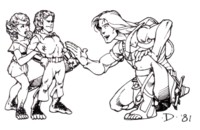 I've already touched upon Jeff Dee's art. Dee was one of the golden age greats, of course. Looking at his illustration of a tough Halfling in the D&D Expert book was the first time I ever considered the possibility of a Halfling who wasn't a little Bagginses.
I've already touched upon Jeff Dee's art. Dee was one of the golden age greats, of course. Looking at his illustration of a tough Halfling in the D&D Expert book was the first time I ever considered the possibility of a Halfling who wasn't a little Bagginses.And his rendering of Osiris in the Deities & Demigods book is still what pops into my head when that deific name is mentioned.
But whatever his D&D creds, as that last picture shows, Dee's illustrative heart lay with super-heroes and he was never better than when depicting the superpowers-set. This picture of Manta-Man, the leader of the Crusaders, just about defined awesome for me in the early 80's. Indeed, I copied that distinctive mask-design--evoking Bat-Man but with it's own flavour--for many (too many really) of my own characters. Since I'm not an artist, I would pretty much just describe my guy's costume as "You remember Manta-Man? That pointy mask? It's like that."
The other strength of V&V were the genuinely unique and downright quirky villains. Good villains are the meat and potatoes of a supers-game; nothing induces player apathy like, "Oh look! It's that big, strong guy. Wuzzisname." Dee and co-creator Jack Herman must have known that; how else to account for the Amazing Floop Brothers?
Yes, the Amazing Floop Brothers: a bunch of no-good orphans who somehow became super-villains, with names like Captain Floop, Blastin' Butch, and the Whippet (who acquired the legs of a greyhound and then made a helmet to match). They were joined in their nefarious endeavors by some others, such as the wonderfully named Rocket Ma'am.
OK, they weren't all as goofy as that, but they were almost always interesting. One thing that I have noticed about more recent super-hero games is that they tend toward the archetype: the Brick, the Mentalist, the Power-Armour Guy. This is due, at least in large part, to the point-buy method of creation that is so prevalent. It's hard for some one to come up with the Whippet when using archetypes (for the record, Carl Floopinski's dog legs let him run fast, but his brother Capt. Floop somehow secured Ice Blasters for him!). V&V's wild spirit of random player-character creation seemed to rub off on the creation of the bad-guys. I don't have any idea whether or not the Floop Bros. were actually created by random-roll or not, but they sure seem like it.
All of the above leads me to my next series: revisiting some of my favourite V&V villains. But rather than just post thirty year old stats, I am going to use the classic characters to create new versions for my Truth & Justice game. I have a few already done which I'll post soon and then I'll post more as and when the spirit of Dee and Herman moves me.
So stay tuned, true believer! Or I'll have to send Shadarkos after you!
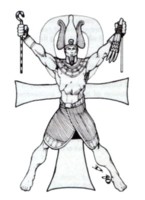
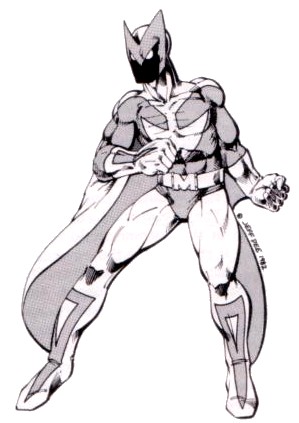
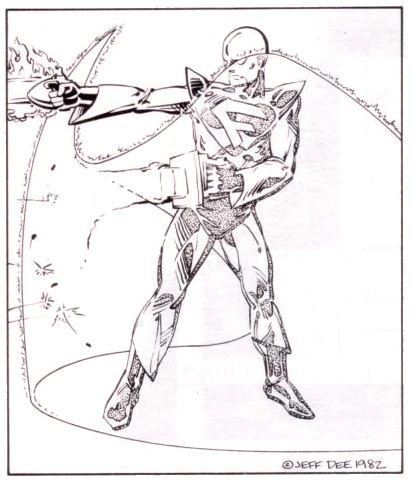
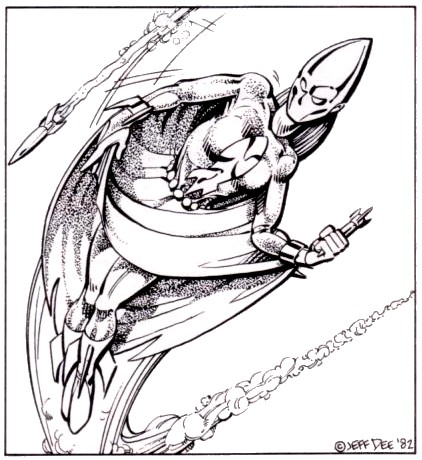
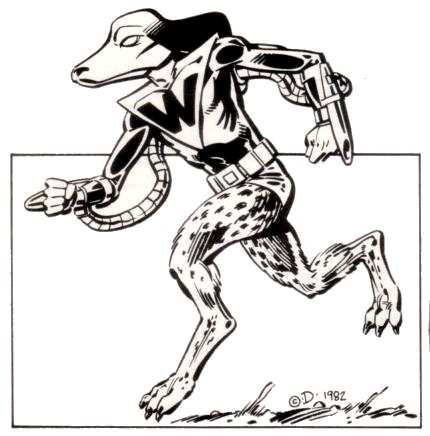
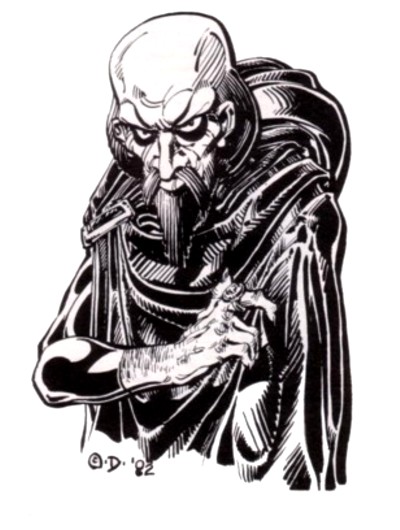

Up until I discovered BASH, V&V was my supers game of choice. It is clunky, but for me it has an innate charm that can't be ignored.
ReplyDeleteDee's art is a huge part of that.
Also, a group of supers could visit your game world via a gate,or a starship crash or whatever a double sized annual event- Check out Planet
Hulk for an example.
The V&V villains were the best.
ReplyDeleteV&V and its crazy villains have been a constant source of inspiration when I was running a superheroic campaign. Such off-the-wall and wacky stuff. And Dee's art is so wonderful for that sort of lighthearted supers view.
ReplyDeleteI really loved V&V...until Marvel Super-heroes came out. System-wise, I never looked back, but the characters in the setting have a certain charm.
ReplyDelete